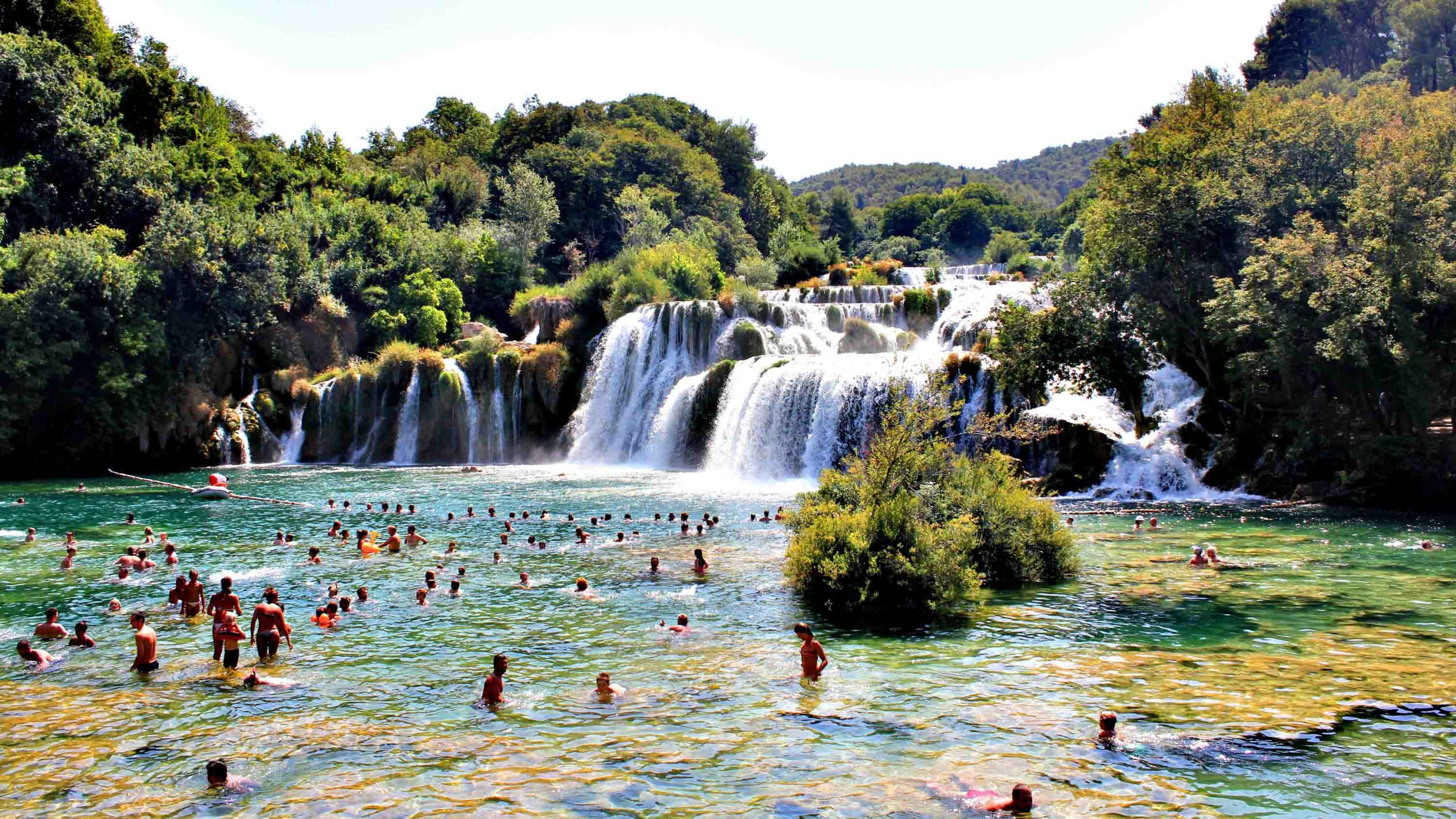
When Croatia’s Krka National Park put measures in place to reduce the impact of tourism, not everyone was happy. As the park hit one million visitors in 2022, Chau-Jean Lin explores the issues at play among residents, tourists and park authorities.
Chau-Jean Lin was one of four mentees who participated in Intrepid’s first Diversifying Travel Media press trip in September 2023 alongside three fellow mentees/aspiring travel journalists and four mentors/established travel writers and editors.
The water is as clear as a polished diamond. A staccato of crickets and cameras accent the seven rumbling waterfalls. We cross a boardwalk with no handrails—like ants traversing across a thin branch on an oak tree.
“Feeling the cool water when the temperature is around 30 degrees is phenomenal,” our guide, Pavle Ljubic, says, recalling previous swims here. It’s September yet it feels like July. I scan for swimmers among the chatter of tourists. There are none.
The oasis-like Krka National Park sits upon 109 square kilometers (42 square miles) in the foothills of the Dinaric Alps, about an hour’s drive from Split, Croatia, and 30 minutes from Šibenik on the country’s Dalmatian coast. Home to over 400 types of flora and endemic wildlife, it’s where 19th-century water mills, Europe’s second-oldest hydroelectric plant, and a Gothic-Romanesque Franciscan monastery sit under canopies of conifers. Just over 4,000 locals live in the nearby towns of Lozovac and Skradin on a barren, near-deserted landscape. But Krka is one of the most visited parks in Croatia, with a cap of 10,000 visitors per day.

